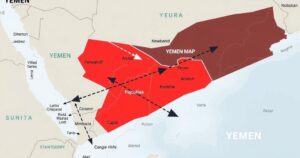7.6 Magnitude Earthquake Rocks the Caribbean, Prompting Evacuations

A 7.6 magnitude earthquake struck the Caribbean Sea south of the Cayman Islands on Saturday. Authorities urged coastal residents to evacuate inland due to potential tsunami risks, although many alerts were canceled shortly thereafter. Despite initial concerns, no significant damage was reported from nearby regions, although some areas were advised to avoid beaches as a precaution.
On Saturday, a powerful earthquake measuring 7.6 on the Richter scale struck the Caribbean Sea, specifically south of the Cayman Islands. The seismic event occurred at 6:23 p.m. local time, with its epicenter located 130 miles southwest of George Town. The quake had a depth of 10 kilometers, as reported by the U.S. Geological Survey. In response to the tremor, several regional jurisdictions advised residents living along the coast to evacuate inland as a precautionary measure against potential tsunami activity, although later assessments prompted authorities in most areas to lift the tsunami alerts.
The U.S. National Tsunami Warning Center confirmed that, while there was no tsunami alert for the mainland United States, a brief advisory was issued for Puerto Rico and the U.S. Virgin Islands. Following the advisory, Hazard Management Cayman Islands encouraged coastal residents to seek higher ground due to anticipated wave heights ranging from 0.3 to 1 meter. Subsequently, the Cayman Islands government declared an “all clear” through their official social media channels.
In Puerto Rico, Governor Jenniffer González Colón stated she remained in contact with emergency management agencies, but did not advise residents to evacuate coastal areas despite the tsunami advisory. Reports indicated that the sounding of alarms prompted densely populated regions in Puerto Rico to experience significant traffic congestion as people moved away from the coast. The Dominican Republic also issued alerts, advising residents near the coast to relocate to heights exceeding 20 meters and move inland by at least 2 kilometers before later canceling the warning.
Authorities in Honduras did not report any immediate damage but advised citizens to avoid beach areas for safety. Meanwhile, the government of Cuba also recommended that individuals exit beachfront zones. The National Oceanic and Atmospheric Administration of the United States indicated that tsunami waves could reach between 1 to 3 meters above the tide level in some coastal regions of Cuba, warranting caution in those areas.
The Caribbean region is geographically positioned on the boundary of several tectonic plates, making it susceptible to seismic activities such as earthquakes. A recent earthquake measuring 7.6 in magnitude raised alarms, prompting local governments to issue immediate safety advisories and tsunami warnings, a common precaution in areas prone to such geological occurrences. The response includes evacuations from coastal regions due to the potential risk of tsunami waves following significant seismic activity, highlighting the importance of preparedness in vulnerable areas.
In conclusion, the 7.6 magnitude earthquake that struck the Caribbean prompted immediate safety measures from various islands affected by its impact. While temporary tsunami warnings were issued, most alerts were later lifted. This incident underscores the ongoing risks associated with living in seismically active regions and the critical nature of effective emergency communications to ensure public safety.
Original Source: www.wifr.com








